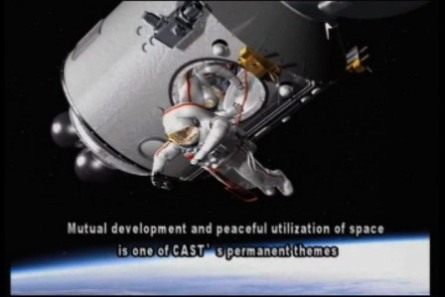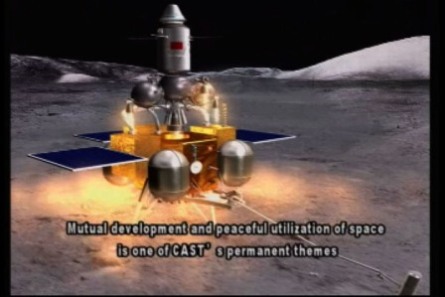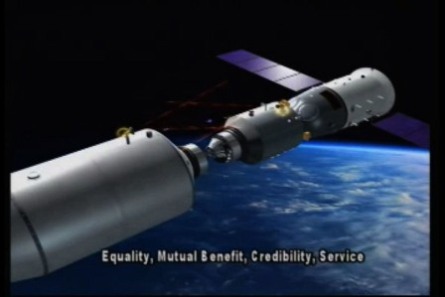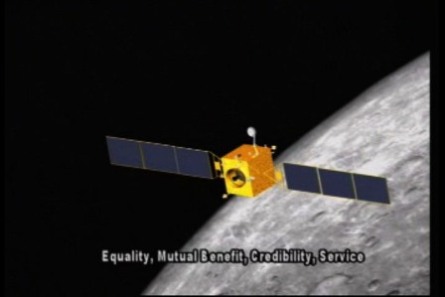Flightglobal has obtained a promotional video from the Beijing based-China Academy of Space Technology (CAST), a prime contractor to China's space programme.
It shows computer generated video images (CGI) of a Shenzhou manned spacecraft docking with what could be a space station module, a Chinese astronaut emerging from a Shenzhou's orbital module using a Russian Orlan-DM like spacesuit and a lunar sample return rocket launching from the Moon's surface.
In May Flight visited CAST and its company presentation hall that included a Shenzhou re-entry capsule, mock-up satellites, a model lunar rover and a scale-model of the proposed lunar sample return vehicle. Here are stills from the video, which is at the end of the page.
|
|
|---|
Above: An astronuat exits on a tether wearing a Zvezda Orlan-DM like spacesuit |
Originally planned for this year the latest date given by the Chinese government is 2008 but the spacewalk may be delayed again. The first manned Shenzhou flight, Shenzhou-5 took place in 2003 with astronaut Yang Liwei, and the second, involving two astronauts, occured two years later. In May Flight had an exclusive interview with astronaut Yang.
Compared to the Russian and US manned spaceflight programme's in the 1960s China's progress has been quite slow, however a report by the state owned Xinhua news agency states that the country's manned flight programme has had many problems.
|
|
|---|
Above: A lunar sample return rocket launches from the Moon's surface |
|
|
|---|
Above: A Shenzhou vehicle docks with a space station module |
This combined vehicle would have crew arrive in a third flight, Shenzhou-10 and the three Shenzhou-vehicle is believed to be what China's authorities have referred to as a space laboratory. After 2012 the manned programme plan includes a space station. This image may show a supply Shenzhou with crew docking with the future space station.
However China's preparations for docking do not seem as advanced as they should be for a 2009-2012 timeframe for the space lab project. Speaking to Flight in May, China Astronaut Training and Research Center officials admitted their docking simulators had yet to be delivered and that they would be fixed base. The Russian space programme, which China is emulating, has used docking simulators with many axes of freedom.
|
|
|---|
Above: China's first lunar orbiter Chang'e 1 orbits the Moon |
The Chang’e-1 lunar orbiter project was initiated in 2004 and flight model production began in 2006 with its launch planned for later this year. The orbiter's platform is based on the DongFangHong (DFH)-3 communications satellite bus. It will be launched on the Long March (LM)-3A rocket, which the China National Space Administration (CNSA) says is primarily designed to launch satellites based on the DFH-3 platform.
The CNSA has also stated that the Chang’e-1 launcher has been adapted especially. Efforts have been made to improve its reliability with redundant designs used in "a number of critical links". The LM-3A Chang'e-1 variant will lift off from the Xichang Satellite Launch Center, a launch site for China’s geosynchronous satellites. The CNSA has said that the launch centre has been modified "to adapt it to the requirements of a lunar mission, especially in safety and reliability".
The following clip is from a longer 7min film showing Long March rocket assembly and launch preparations, China's first astronaut Yang Liwei in training, satellite production, and a range of shots of CAST's facilities.
Source: FlightGlobal.com




















